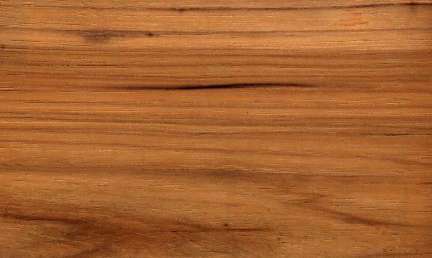
Nutmeg hickory (Carya myristicaeformis)
Family: Juglandaceae
Common names: Hickory, Nutmeg hickory, Pecan
Distributed in: United States (North America)
Distribution overview: Scattered from South Carolina west to eastern Texas and south eastern Oklahoma, possibly even eastern Mexico. Growsn on banks of rivers and swamps in rich moist soils, occasionally on higher ground and often on limestone.
Common uses: Building materials, Chairs, Chests, Concealed parts (Furniture), Decorative veneer, Desks, Dining-room furniture, Domestic flooring, Dowell pins, Dowells, Drawer sides, Figured veneer, Fine furniture, Floor lamps, Flooring, Fuelwood, Furniture , Furniture components, Furniture squares or stock, Handles, Hatracks, Interior construction, Interior trim, Kitchen cabinets, Ladders , Living-room suites, Millwork, Office furniture, Paneling , Parquet flooring, Radio - stereo - TV cabinets, Rustic furniture, Shafts/Handles, Stools, Sub-flooring, Tables , Tool handles, Truck bodies, Utility furniture, Vehicle parts
Product sources: The lumber trade generally separates the dozen or so Caryas native to North America into two groups: Hickory and Pecan. Nutmeg hickory is possibly the least plentiful of the Pecans because its growth range is sporadic and also because it is cultivated selectively for nut production. It is, however, sold in a mixture with other members in the Pecan group, which makes its scarcity unnoticeable.
Environment profile: Status has not been officially assessed
Tree size:
Tall, straight bole
Colors: the heart isWell defined, Yellowand the sapwoodWhite, Yellow.The grain isStraight, the textureHardand the lusterMedium
Natural durability: Perishable, Very little natural resistance
Odor: No specific smell or taste
Kiln Schedules: T8 - D3 (4/4) T6 - D1 (8/4) US
Drying Defects: Slight end splitting, Slight surface checking
Ease of Drying: Special attention required
Comments: Nutmeg hickory belongs to the Pecan group of hickories. The principal timber producing species in this group are Pecan (C. illinoensis ), Bitternut (C. cordiformis ), Water hickory (C. acquatica ), and Nutmeg hickory (C. myristicaeformis ). Members in this group are generally less dense, easier to work, and are darker in color, which make them a better choice for furniture
Blunting Effect: Severe effect
Boring: Easy
Carving: Very Good to Excellent Results
Mortising: Good mortising properties
Some effort required
Moulding: Requires special attention.
A reduction in cutting angles is recommended for best
Movement in Service: Requires special attention.
A reduction in cutting angles is recommended for best
Nailing: Satisfactory nailing properties
Planing: Special attention required
Resistance to Impregnation: Wood is moderately resistant to treatment
Response to hand tools: Easy to machine
Sanding: Hand sanding difficult
Veneering qualities: Can sometimes be sliced into highly decorative veneers for paneling
Nutmeg hickory logs may sometimes be sliced into decorative veneers for paneling
Steam bending: Good
Screwing: Good screw holding properties
; Turning: Very good
Polishing: Very Good to Excellent;
- Numerical data Metric
- Numerical data English
- Strength properties
- References
 |
 |
 |
 |
| Item |
Green |
Dry |
Metric |
| Specific Gravity |
0,52 |
0,56 |
|
| Density |
|
|
kg/m3 |
| Bending Strength |
627 |
1143 |
kg/cm2 |
| Crushing Strength |
52 |
108 |
kg/cm2 |
| Hardness |
|
|
kg |
| Impact Strength |
134 |
|
cm |
| Shearing Strength |
|
70 |
kg/cm2 |
| Stiffness |
88 |
117 |
1000 kg/cm2 |
| Tangential Shrinkage |
9 |
|
% |
| Radial Shrinkage |
5 |
|
% |
| Weight |
705 |
576 |
kg/m3 |
| Maximum Load |
1,61 |
1,75 |
cm-kg/cm3 |
| Toughness |
|
|
cm-kg |
| Static Bending |
|
|
kg/cm2 |
|
 |  |  |  | | Item | Green | Dry | English | | Bending Strength | 8918 | 16268 | psi | | Crushing Strength | 745 | 1539 | psi | | Impact Strength | 53 | | inches | | Maximum Crushing Strength | 3900 | 6772 | psi | | Shearing Strength | | 1009 | psi | | Stiffness | 1264 | 1666 | 1000 psi | | Work to Maximum Load | 23 | 25 | inch-lbs/in3 | | Specific Gravity | 0.52 | 0.56 | | | Weight | 44 | 36. | lbs/ft3 | | Radial Shrinkage | 5 | | % | | Tangential Shrinkage | 9 | | % | | Volumetric Shrinkage | 14 | | % | |
Heavy
Compression strength (parallel to grain) = high
Bending strength (MOR) = high
The wood has very high bending strength, and is much stronger than Teak in the air-dry condition (about 12 percent moisture content). Maximum crushing strength, or compression strength parallel to grain, is also high. It is a very heavy wood
Arno, J.1991. Carya myristiciformis - Nutmeg hickory. In A Guide to Useful Woods of the World. Flynn Jr., J.H., Editor. King Philip Publishing Co., Portland, Maine. 1994. Page 87-89.Boone, R. S., C. J. Kozlik, P. J. Bois, and E. M. Wengert.1988.Dry Kiln Schedules for Commercial Woods:Temperate and Tropical.USDA, Forest Service, General Technical Report FPL-GTR-57, Forest Products Laboratory, Madison, Wisconsin.Little, E.L.1980.The Audubon Society Field Guide to North American Trees - Eastern Region.Published by Arthur A. Knopf, New York.Panshin, A. J. and C. deZeeuw.Textbook of Wood Technology.McGraw-Hill Series in Forest Resources.McGraw-Hill Book Company, New York.Rendle, B.J. Editor. 1969. World Timbers, Volume Two - North & South America (Including Central America and the West Indies). Published by Ernest Benn Limited, Bouverie House, Fleet Street, London.USDA.1987.Wood Handbook:Wood as an Engineering Material.Agriculture Handbook No. 72.United States Department of Agriculture, Forest Service, Madison, Wisconsin.USDA.1988.Dry Kiln Operators Manual, Preliminary Copy.Forest Service, Forest Products Laboratory, Madison, Wisconsin.
|








